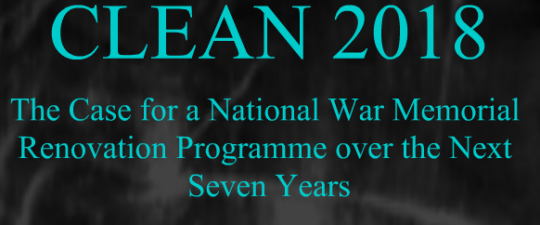Ray Thompson is a leading campaigner for the preservation of the UK’s war memorials. The following is an article he has written for the Derby Telegraph on the importance of promoting interest in preserving the country’s war memorials.
“With the deaths of Frank Buckles and Claude Choules earlier this year, living memory of the horrors of the First World War trenches came to an end.
The question is therefore timely: what do we collectively know about the Great War today? For most of us, from Kitchener’s pointing finger and the grainy early film of troops going “over the top” to the first lumbering tanks and the distressing effects of shell shock, it is a series of well-used images, brought to us through modern media, which form the basis of our knowledge. The war’s complicated causes, destructive course and lasting consequences are increasingly less understood.
It remains difficult for just about everyone born in the 20th century to grasp the enormity of the losses suffered on all sides.
On Remembrance Sunday, included in the respect we show will be those repatriated from modern conflicts. Although tragic, their numbers are, thankfully, small compared with what our forebears coped with more than 90 years ago.
Returning such vast numbers to these shores for burial in the way we do today was impossible; the families of those who never made it back and the communities in which they lived were forced to find other ways of commemorating and remembering. Their answer was to create war memorials.
Today, we need to look at war memorials in a new way. They are a phenomenon of the immediate post-war period but, if we regard them as another facet of the war itself, just as relevant as those aspects already mentioned, we soon realise that one thing sets them apart; they remain with us “in the flesh” and as such, need to be cared for.
While other parts of our “built heritage” such as railway stations, theatres and town halls have undergone renovation to keep them functional, war memorials have attracted a kind of “sacred permanence” in the public mind. In one sense that’s fine but nine decades or so at the mercy of natural erosion, the weather, traffic vibration, ably assisted by vandalism, theft, changing lifestyles, modern regulations and increasing indifference, is taking its toll.
Over the next seven years starting with the centenary of the outbreak of war in August 2014, and culminating in the centenary of the Armistice in November 2018, a stream of information about the Great War will be heading our way. But how many more memorials will have disappeared by then? How many more names of the fallen will have become unreadable? How much more mortar and stonework will have crumbled away? How many more brass and copper plaques will have been prized from their mountings?
Heritage, of which our war memorials are just a part, is tricky. No-one has given us the right to lose it through neglect, ignorance or lack of money. I would suggest the reverse is true; we have a duty to retain it through our technology, knowledge and creativity for those who will follow us.”
To follow Ray Thompson’s Clean 2018 campaign, click here to visit his website.
Images courtesy of the Ray Thompson War Memorial Campaign website.
